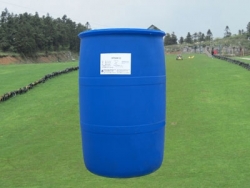When in situ remediation is carried out, the use of biosurfactants may have some toxicity and impact on the indigenous microbial populations living in them, and in addition, since they can be degraded by microorganisms, their metabolites may be more toxic. Therefore, the presence of biosurfactants may cause some pollution to the environment and increase the burden of environmental pollution. It can be seen that strengthening the research on the potential impact of biosurfactants on the environment and their biodegradation characteristics will provide an important scientific basis for effectively controlling the environmental pollution caused by biosurfactants and making rational use of biosurfactants. When conducting on-site surfactant solubilization remediation, comprehensive biosurfactant toxicity and environmental hazard experiments must be conducted to ensure the safety of biosurfactant use.

In addition, the applied biosurfactant may also be adsorbed to the soil during in situ remediation, and its may also affect the physical, chemical, and biological properties of the soil. The presence of biosurfactants can reduce the surface tension at the soil-water interface and cause changes in the pressure drop within the soil pore space, resulting in changes in the partitioning of water and air between soil pores and altering the original physical properties and redox conditions of the soil, with potentially negative effects. Research on the interaction of surfactants with the soil environment is very lacking, but it is of great interest and in-depth study.
Surfactin, also known as Bacillus subtilis ester peptide, is a circulating ester peptide produced by Bacillus subtilis (Bacillus subtilis). It consists of a nine-peptide linked to β-hydroxy-ω-methylmyristoylic acid by a cyclic condensed peptide bond, and is another well-known class of biosurfactants with anti-microbial components. Surfactin is classified into three types according to the amino acid sequence: Surfactins A, B and C. In amino acid position, Surfactin-A has L-leucine, Surfactin-B has L-valine and Surfactin-C has L-isoleucine, and the lactone ring associated with the amino acid position is formed by C14 -C15β-hydroxy fatty acid formation. Clostridium perfringens surfactant is a highly efficient biosurfactant and the surface tension of 0.l mol/L sodium bicarbonate solution containing only 0. 005 % Clostridium perfringens surfactant decreased to 27. 9 mN/m.
Bacillus subtilis surfactant is an effective biosurfactant, but compared to the previous 2 biosurfactants, there are fewer studies about its application in biodegradation remediation.
The promotion of biodegradation of the insecticide endosulfan by Bacillus subtilis surfactin was firstly investigated by Awashti et al. Olivera et al. isolated a bacterium, subtilis O9, from contaminated substrates that secreted Bacillus subtilis surfactin when sucrose was used as a substrate. They added the subtilis surfactant to the contaminated substrate and found that only 6.8% of aliphatic hydrocarbons and 7.2% of aromatic hydrocarbons were not degraded after 10 d.
Translated with www.DeepL.com/Translator (free version)